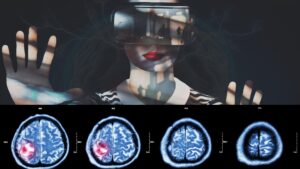The five human senses, through which our brain receives information, analyzes, and makes sense of the information, are the next-level-creation of the “nature lab”.
And the current trend of research in Artificial Intelligence, Machine Learning, Robotics, and Humanoids may also have made you curious about if scientists are experimenting to create human senses in the lab.
If so, you are right, because the AI of the next level will certainly require its own senses, which it cannot borrow from any human. After scientists create senses for them, they will be able to use their own brains to create additional senses and come up with new wisdom.
How is it possible to create senses in the lab?
Artificial senses, but as powerful as the natural human senses, can pave the way for AI to create its own intelligent and wise systems. They can be used as a test bed for years in the lab before they make it onto the market.
Artificial Intelligence (AI) focuses on using computers and software to simulate human intelligence. The goal of AI engineers has been to build systems that are able to think, act, learn, and even feel like humans.
If you explore various areas of research on artificial intelligence, you will find that researchers are working towards creating an AI model to have a sense of sight, hearing, or taste, along with analyzing patterns among them and then making sense of them.
Then there are those scientists who aim to give AI its own “self-awareness” and “emotional intelligence”. The goal is to create humanoids like Sophia, who debuted in 2016. Sophia is considered the most advanced humanoid robot. Starship Delivery Robots, Pepper Humanoid Robots, Bearrobotic Restaurant Robots, Nimbo Security Robots, and Shadow Dexterous Hand are the top 5 advanced AI robots in 2022.
But these robots do not have any sense like humans. They just go along according to the program. The extent of their function depends on the architecture of the system.
The reason why scientists are working towards creating senses for AI is that they want to make it smarter.
Prerequisites to create senses
To create a sense, it is essential to have a system that can recognize patterns among other senses and then act accordingly to make sense of the data.
Synapses and neural networks – former: the connection between nodes, or neurons, in an artificial neural network (ANN) and latter: a machine learning process called deep learning respectively – are considered to be the fundamental building blocks of artificial intelligence. These are the basic components that make up the brain’s signals and decisions. The mind of a human or a robot consists of these neurons connected to one another in different patterns.
Despite the fact that scientists are experimenting with both artificial intelligence (AI) and machine learning, it’s nothing but an enhanced version of artificial neural networks in order to make devices more intuitive, efficient, and intelligent. These components have been continuously making progress over time because they work on multi-variate algorithms that can learn multiple models at once.
The complexity of our senses
However, creating senses in a lab can be a great challenge. It is because each of the five human senses consists of different neurons arranged in a unique pattern in the neural network.
The sense of sight consists of the sensory organ (the eye) and parts of the central nervous system (the retina containing photoreceptor cells, the optic nerve, the optic tract, and the visual cortex) and other associated structures for processing the image.
The primary auditory receptor cells, or inner hair cells in our ears, convert sound waves into an electrical signal that is transmitted to the brain through an auditory nerve, which then reaches the auditory cortex to process them further.
In our mouth, taste buds are responsible for sensing salty, sour, sweet, and bitter tastes through gustatory hairs present on them while they also connect to a part of the brain called the “gustatory cortex.”
The sense of touch consists of 1) single- and mechanoreceptor cells as well as 2) glabrous (skin) epidermous and 3) hair cells for detecting dynamic stimuli.
The sense of smell is made up of 1) olfactory epithelium, 2) olfactory receptors and the olfactory bulb, 3) olfactory cortex, 4) amygdala and hippocampus, 5) hypothalamus, and 6) thalamus.
Challenges in creating senses in a lab
You can see how complex the process is of creating a completely new sense in a lab. You will have to start by identifying the key neurons and their connections and then make the necessary modifications, build new ones, or add some new sensory structures.
These structures will then be inserted into the appropriate areas of the brain for processing. After making all these, you should place them in a bioreactor with appropriate medium conditions as well as target cells and tissues for interaction.
However, the most difficult part is to make the brain accept all the new additions. It will need time, patience, and determination from you to be able to do this. Besides, this is not an easy task for those who have never worked in the field.
In order for the sense of touch to be created in a lab, you should start by identifying the key neurons and their connections that are responsible for detecting static stimuli such as pressure, vibration, or pain.
Similarly, a sense of sight can also be created with the help of an optogenetics approach. This involves the release of light-sensitive proteins in the neurons after stimulating them with a specific wavelength of light.
This approach could then be used in the lab to create sensors such as photoreceptors and photodetectors that will allow you to respond to external stimuli in a manner similar to how they work in nature.
In addition to these, one should also acknowledge that they will have to identify the key neurons present in other species that can be used for creating senses as well as parts of the central nervous system that are responsible for processing them.
Risks associated with creating senses
But the most vulnerable part of artificial intelligence is its “senses” mechanism, which can cause fatal accidents if malfunctioned or attacked by hackers.
For example, in a nuclear disaster zone, robots with nuclear plant inspection systems can be sent to assess the damage and clean the radiation by using radio frequency identifiers. But if a hacker steals the access code, he/she can take control of these robots and cause further damage.
Similarly, in order to create artificial senses in a lab, a neural network must be trained to recognize patterns among other sensors. The most vulnerable part of this mechanism is that it can be hacked.
Ill-minded people may acquire temporary access to it and use it either for personal gain or as part of some political agenda. If so, they can create problems at any level, including assaults on targeted individuals or public and critical infrastructure systems.
In order to guarantee the security aspect of artificial senses in the lab, they will have to train the artificial senses about precaution and protection.
These sensors must be developed and implemented while keeping in mind their full potential and how they can be used, as well as how they can be prevented from misuse.
Before you create senses in a lab, you, therefore, need to be sure that:
- Senses (sensors) will include, but not be limited to sight, hearing, taste, and touch.
- Sensors should be protected against hacking and the use of malicious code to prevent misuse.
- Sensors should also be protected against accidental discharges as well as any potential harm from natural disasters.
- The system needs to be designed in such a way that it will generate the required result without causing an accident in the process.
- It should be able to accurately detect the type of pollution and its extent.
- Artificial senses should have a physical system capable of linking with devices such as cameras and sensors in order to increase their processing capacity.
- This can enable better processing time, accuracy, and performance.
To sum up, artificial senses are the next step for dynamic and smart robotic devices, for which you will require more precision, speed, and accuracy to be able to create them in a lab. The level of stability, power consumption, and energy efficiency should be on par with that of organic systems.
However, due to the complex nature of these systems, a host of developing challenges are being faced by researchers in this field. These include the integration of artificial senses into robotic systems, while they can also help scientists to understand how real senses work as well as provide solutions to the various problems related to artificial senses.
- Researchers use AI to make Belgian beer taste better - March 27, 2024
- Researchers introduce RAmBLA as a holistic approach to evaluating biomedical language models - March 26, 2024
- Smart tattoos that monitor health metrics and vital signs - March 25, 2024



